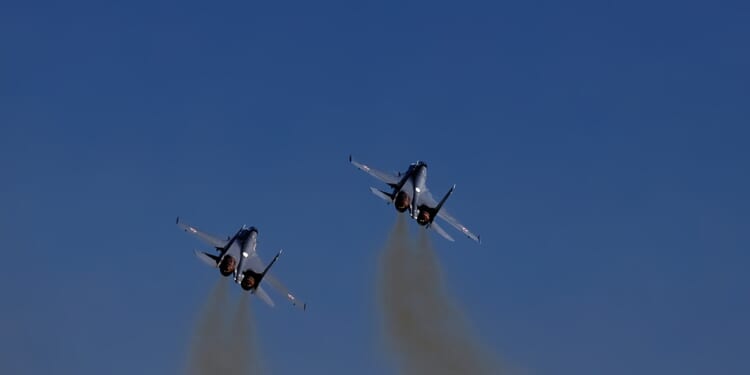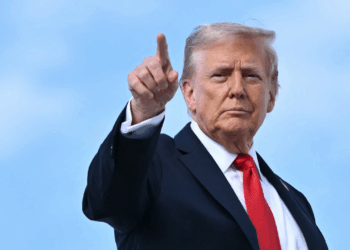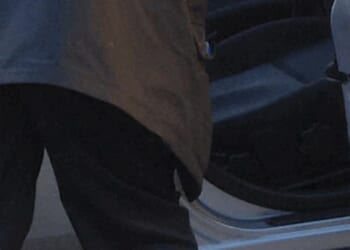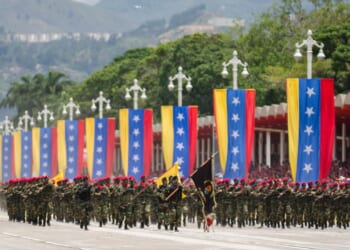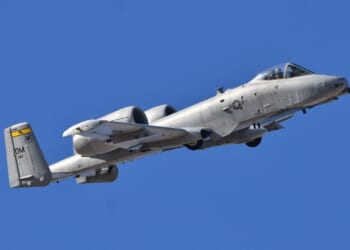AI-enhanced drones and fighters will reduce Russia’s reliance on a shrinking pool of elite pilots, offsetting the manpower and training pipeline disadvantages that have long hindered the Russian military.
The Russian Air Force, in a push to modernize and keep pace with the United States and China, has been experimenting with artificial intelligence. Moscow recognizes that AI is not just a trend, but a military necessity for preserving any kind of parity with the world powers—perhaps the only tool capable of offsetting Russia’s glaring deficiencies in resources, industrial capacity, and manpower. Indeed, Moscow views AI as a crucial force multiplier. The Russian Aerospace Forces in particular have integrated AI into combat aircraft, drones, targeting networks, and command systems.
Russia’s Upcoming “Hunter” Drone Is Powered by AI
Arguably the most high-profile Russian AI project is the Sukhoi S-70 “Okhotnik” or “Hunter” drone. The S-70 is a stealthy, unmanned combat aerial vehicle (UCAV) that was designed as a “loyal wingman” for Russia’s fifth-generation Su-57 fighter—a scheme that mirrors the US’s Collaborate Combat Aircraft (CCA) drone’s connection to the F-35 and upcoming F-47 NGAD.
In concept, the S-70 will use AI to fly alongside manned aircraft, sharing targeting data, conducting reconnaissance, and even executing strikes with limited human supervision. Whether Russia is close to fielding a manned-unmanned aerial team remains unclear; the Kremlin is opaque about its progress. But something about Russian autonomous hunter-killer drones able to execute strikes without human oversight does not sit well with US defense planners—or ethicists.
The S-70 is not the only application of AI in the Russian Aerospace Forces. Russian engineers are also pursuing swarming drone concepts involving multiple UAV’s, guided with machine learning algorithms to work cooperatively in penetrating enemy air defenses. Elements of the concept have been on display in the skies over Ukraine, where Russian kamikaze drones have overwhelmed air defense systems through sheer numbers, allowing a handful of drones and missiles to penetrate and strike their targets. The war in Ukraine has proven an excellent opportunity to gain practical experience in adapting semi-autonomous drones for surveillance and strike missions.
The Russians are also experimenting with AI in the cockpit. The fifth-generation Su-57 is understood to feature an AI “co-pilot” that can reduce the human pilot’s workload. The “co-pilot system will be used to monitor flight conditions, suggest maneuvers, and free up the pilot for higher-priority decision making. And while the co-pilot feature falls well short of full AI autonomy, the integration marks a shift towards the blending of human intuition with machine computation—the same shift that is happening incrementally in all of the world’s top militaries.
The Strategic Implications of Russia’s AI Use
The strategic implications for Russia’s aerial AI integration are significant. AI-enhanced drones and fighters will reduce Russia’s reliance on a shrinking pool of elite pilots, offsetting the manpower and training pipeline disadvantages that have long hindered the Russian military. AI also introduces uncertainty for adversaries; whether an aircraft is being operated by a human or AI changes the response calculus. But determining whether a human or AI is at the helm will be difficult to determine in the time allowed for a punctual decision.
Of course, Russia still faces the same challenges in AI integration that all militaries do—as well as some that are unique to Moscow. In particular, Western sanctions have kept Russia from procuring the advanced semiconductors needed for AI development. And Russia’s industrial output is notoriously slow—there are still only a handful of advanced Su-57s in flight, compared to more than 1,200 US-made F-35s—meaning substantial AI integration may still be a pipe dream.
About the Author: Harrison Kass
Harrison Kass is a senior defense and national security writer at The National Interest. Kass is an attorney and former political candidate who joined the US Air Force as a pilot trainee before being medically discharged. He focuses on military strategy, aerospace, and global security affairs. He holds a JD from the University of Oregon and a master’s in Global Journalism and International Relations from NYU.
Image: Shutterstock / Evgeniyqw.

